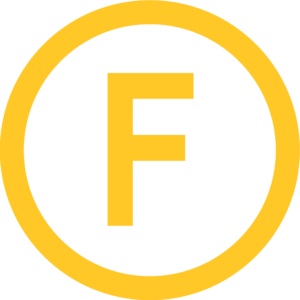Graphic design is a thriving field in Canada, with demand for skilled professionals in industries like advertising, media, and tech. For foreign nationals, securing a graphic design job with visa sponsorship offers a pathway to a rewarding career with salaries ranging from CAD 50,000 to CAD 80,000 annually. This guide details the steps to find such roles, including qualifications, visa options, and application strategies for 2025.
Step 1: Understand Graphic Design Roles
Graphic designers create visual content for branding, marketing, and digital platforms.
- Key Roles: Graphic Designer, UI/UX Designer, Motion Graphics Designer, Brand Identity Designer.
- Responsibilities: Design logos, websites, advertisements, and animations; collaborate with marketing teams; ensure brand consistency.
- Work Settings: Advertising agencies, tech companies, design studios, or freelance for multiple clients.
- Skills Needed: Proficiency in Adobe Creative Suite (Photoshop, Illustrator, InDesign), creativity, and attention to detail.
Step 2: Obtain Required Qualifications
While a degree is not always mandatory, relevant credentials enhance employability.
- Education: A diploma or bachelor’s degree in graphic design, visual arts, or a related field is preferred. Foreign credentials must be assessed by World Education Services (WES) for Canadian equivalency.
- Certifications: Courses in UI/UX (e.g., Coursera, Udemy) or software-specific certifications (Adobe Certified Professional) add value.
- Portfolio: A strong portfolio showcasing diverse projects (e.g., branding, web design) is critical. Include 8–12 high-quality pieces.
- Experience: 1–3 years of professional or freelance experience strengthens applications. Internships or volunteer work count.
- English/French Proficiency: Achieve CLB 7 (IELTS 6.0 or TEF Canada equivalent) for visa and employer requirements.
Step 3: Explore Visa Options
Non-Canadian citizens need a work permit with employer sponsorship.
- Temporary Foreign Worker Program (TFWP): Requires a job offer and Labour Market Impact Assessment (LMIA) proving no Canadian can fill the role. Details at IRCC.
- Express Entry (Federal Skilled Worker Program): Points-based permanent residency (PR) pathway for designers with job offers or high skills. Graphic designers (NOC 52120) qualify as skilled professionals.
- Provincial Nominee Program (PNP): Provinces like Ontario and British Columbia nominate designers for PR based on local demand.
- Application Process: Secure a job offer, obtain LMIA or Express Entry invitation, and apply via IRCC. Processing takes 2–6 months; fees are CAD 155 (work permit) or CAD 1,365 (Express Entry).
- PR Pathway: Transition to PR via Express Entry or PNP after 1–2 years of Canadian work experience.
Step 4: Build a Competitive Portfolio
A standout portfolio is essential for graphic design jobs.
- Content: Include branding projects, web designs, print media, or motion graphics. Showcase versatility and client-focused work.
- Platform: Host your portfolio on Behance, Dribbble, or a personal website optimized for mobile viewing.
- Tailoring: Customize your portfolio for each job, aligning with the employer’s industry (e.g., tech for Shopify, advertising for Ogilvy).
- Showcase Impact: Highlight measurable results, like “Increased client engagement by 30% through redesigned website visuals.”
Step 5: Search for Visa-Sponsored Jobs
Finding a job with sponsorship requires targeted research.
- Job Portals: Use Job Bank for government-listed roles or Indeed and LinkedIn for private sector jobs. Filter for “visa sponsorship” or “graphic design.”
Key Employers:
- Shopify: Hires UI/UX and brand designers in Ottawa and Toronto, offering sponsorship.
- Ogilvy Canada: Seeks creative designers for advertising campaigns, with visa support for skilled candidates.
- Electronic Arts (EA): Recruits motion graphics designers in Vancouver, often sponsoring H-1B or TFWP permits.
- Locations: Toronto, Vancouver, and Montreal are design hubs, but smaller cities like Calgary offer opportunities.
- Recruitment Agencies: Creative Circle and Robert Half specialize in placing designers with visa sponsorship.
- Networking: Attend design events like FITC Toronto or connect with recruiters on LinkedIn.
Step 6: Prepare a Strong Application
A tailored application is critical for standing out.
- Resume: Create a 1–2 page Canadian-style resume, emphasizing software skills, project outcomes, and certifications. Include a portfolio link.
- Cover Letter: Highlight your design expertise, visa eligibility, and passion for the employer’s industry. Keep it concise (300 words).
- References: Provide 2–3 professional references from past clients or employers.
- Software Proficiency: List tools like Figma, Sketch, or After Effects to match job requirements.
Step 7: Ace the Interview
Interviews assess your creativity, technical skills, and cultural fit.
- Portfolio Review: Be ready to walk through your portfolio, explaining design choices and client feedback.
- Common Questions: Expect queries like “How do you handle tight deadlines?” or “Describe a branding project you led.” Use the STAR method.
- Practical Tests: Some employers assign tasks, like designing a logo or mockup, to test skills.
- Employer Research: Study the company’s brand aesthetic (e.g., Shopify’s clean UI) to tailor responses.
- Visa Discussion: Confirm the employer’s sponsorship capacity and LMIA willingness during interviews.
Step 8: Secure the Job and Visa
Finalize employment and visa details post-offer.
- Job Offer: Ensure it specifies salary (CAD 50,000–80,000), role, and sponsorship details.
- Visa Application: Submit the LMIA, job offer, portfolio, and English test results via IRCC. Employers may assist with paperwork.
- Relocation: Obtain a Social Insurance Number (SIN) upon arrival and arrange accommodation.
- Onboarding: Complete employer training, such as brand guidelines or software onboarding.
Tips for Success
- Upskill: Learn trending tools like Figma or motion graphics to stay competitive.
- Freelance Experience: Take on freelance projects via Upwork to build Canadian client references.
- Avoid Scams: Verify employer sponsorship status on IRCC and never pay for job offers.
- Location Flexibility: Consider roles in smaller cities like Halifax for less competition and faster sponsorship.
- Network Locally: Join Canadian design communities like GDC (Graphic Designers of Canada) for connections.
Industry Trends and Statistics
Demand for Graphic Designers
Canada’s creative sector faces a shortage of 10,000 designers in 2025, driven by growth in tech, gaming, and advertising. Toronto and Vancouver report over 3,000 vacancies each.
Salary Trends
Graphic designers earn CAD 50,000–80,000 annually, with entry-level roles at CAD 45,000 and senior UI/UX designers reaching CAD 90,000. Urban hubs offer 10–15% higher salaries.
Visa Sponsorship Insights
In 2024, over 800 creative employers offered sponsorship, with 60% using TFWP for designers. Express Entry processed 2,000 PR applications for NOC 52120 roles, with 70% approved within 6 months.
Regional Opportunities
Toronto leads with 40% of design jobs, followed by Vancouver (25%) and Montreal (20%). Emerging hubs like Calgary and Ottawa offer sponsorship for tech-focused design roles.






